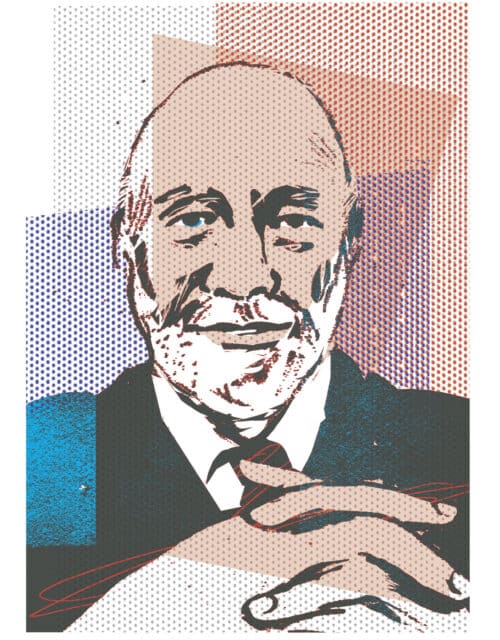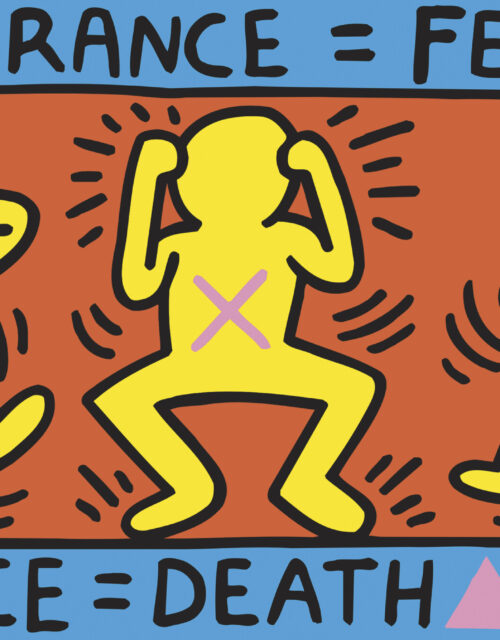Adding to the Policy Toolbox
What happens when innovation slips the bounds and intent of its makers? Many experts worry that the result could be destabilization and mayhem. This is perfectly reasonable for intelligence and defense innovation that deals in powerful, potentially dangerous technologies. And in the context of the COVID-19 pandemic, during which people died because of bad information about vaccines and misuse of inappropriate drugs, a security lens on health seems warranted. But there are other ways to consider what happens when innovation moves outside the confines of its creators. We might stand the question on its head: How could a program be appropriated by groups of people, scaled, and used to accomplish things that surpass creators’ intentions and wildest hopes? What might be possible when the walls around the church of innovation come down?
Editor's Journal
Innovation’s New Catechism
Read MoreFor decades, DARPA has used the Heilmeier Catechism—a series of eight questions including “Who cares?”—to steer investment decisions. But when ARPA-H, the new health-focused innovation agency, launched recently, it added two new questions that take equity and security concerns into account. Issues editor-in-chief Lisa Margonelli considers what these additions might mean for the future of innovation.
Forum
Science and Global Conspiracies
Read MoreFostering Clean Energy in Africa
Read MoreRegulating Space Debris
Read MoreHow to Clean Up Our Information Environments
Read MoreTraining More Biosafety Officers
Read MoreEnhancing Trust in Science
Read MoreAdding Humanity to Anatomy Lessons
Read MoreNavigating Interdisciplinary Careers
Read MoreNursing and the Power of Change
Read MoreStop Patching!
Read MoreRegulations for the Bioeconomy
Read MoreHow Open Should American Science Be?
Read MoreAsking the Hard Questions
Read More

Gallery
Blue Dreams: Rebecca Rutstein and the Ocean Memory Project
Perspectives
Academia’s Openness Could Strengthen its Partnerships With the Intelligence Community
Read MorePartnering with universities provides the intelligence community with access to the latest research and insights from academia while also giving university scholars more opportunities to apply their expertise to an unusual set of practical problems.
Creative Intolerance
Read MoreThe Venice Biennale Architettura 2023 offers age-old and avant-garde insights into engineering design and duty.
To Save Society from Digital Tech, Enable Scrutiny of How Policies Are Implemented
Read MoreWell-designed policies alone cannot prevent social harm from new technologies. Instead, watchdogs must have tools to scrutinize how such policies are implemented, paving the road for digital accountability.

Interview
“Real Policymaking Involves a Lot of Other Things Besides Pure Technical Analysis.”
Poetry
Zinc Fingers
Read More“Though scientists inform us that criminals / have insufficient zinc I’ve always believed / it’s insufficient gold and silver that gets / them going…” —Peter Meinke, Zinc Fingers

Gallery
When Art Catalyzed Both Community and Treatment
Features
How to Catalyze a Collaboration
Read MoreWhen an interdisciplinary, international group of researchers turned their attention—and a tool for knowledge structuring—to work out the mechanisms of COVID-19, they learned how diverse scientists can synthesize information constructively.
How to Investigate an Algorithm
Read MoreAlgorithmic auditing has the potential to decrease bias and prevent or fix the harms caused by artificial intelligence.
A New Policy Toolbox for Semiconductor Supply Chains
Read MoreInstead of relying on production subsidies to shore up fragile semiconductor supply chains, policymakers should explore alternative approaches, including common design platforms and flexible architectures.
ARPA-H Should Zero In on Pandemic Prevention
Read MoreWith a smaller budget than hoped for, ARPA-H must focus. Here’s how the new agency can synergize existing government efforts and advance breakthrough technologies that protect us all.
ARPA-H Could Offer Taxpayers a Fairer Shake
Read MoreUS drug companies turn taxpayer-funded innovation into astronomical profits. A new agency focused on health innovation could shift the rewards of medical advances to benefit public health.
From Bedside to Bench and Back
Read MoreResearch driven by patients with rare diseases is producing faster discoveries and treatments—and challenging long-held assumptions about knowledge production.
Chinese Academics Are Becoming a Force for Good Governance
Read MoreAs the life sciences in China have rapidly advanced over the past two decades, the country’s scientific community has become more adept at shaping policy for responsible research.
Why Space Debris Flies Through Regulatory Gaps
Read MoreSpace is filling with more satellites and commercial ventures, all threatened by orbital debris. It’s time to clarify which agencies have authority to act.
The Role of Institutional Leaders in Driving Lasting Change in the STEM Ecosystem
Read MoreUnderstanding the ways that leadership generates change and accountability is essential to transform a system built upon historical inequities.
Book Reviews

Left Behind by the Green Revolution
Read MoreMadhumita Saha reviews a book by Marci Baranski that explores the scientific community’s interaction with the wheat plant during the Green Revolution.

Chasing De-extinction
Read MoreIn her novel The Last Animal, Ramona Ausubel takes readers on an action-packed, globetrotting quest to resurrect a woolly mammoth.
